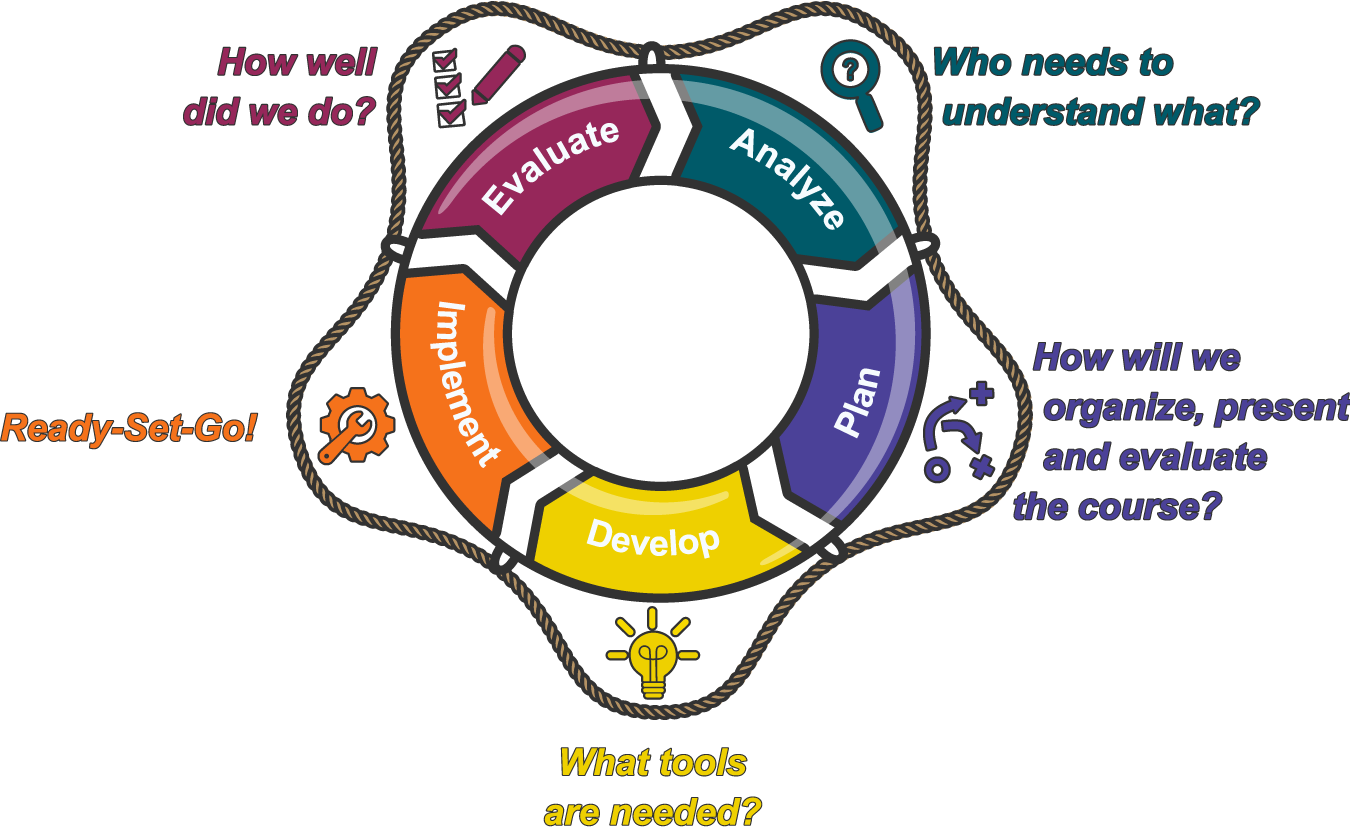By SMM Education Committee Members, Patricia Sullivan and Elisabeth Fahrni-Mansur. Illustrations by Cara Gallagher
Marine mammal science is a vast, dynamic, and fascinating field. Integrating various aspects of marine mammal science in educational outreach can contribute to an improved understanding and support effective marine conservation.
This framework aims to inspire and guide conservation practitioners conducting educational outreach. Incorporated pedagogical principles help ensure participant engagement and achieve course objectives.
We hope this ‘checklist for maximizing learning’ will inspire anybody planning to talk to others about marine mammals to create engaging and effective marine mammal science courses.
Download this checklist as a PDF here.

Analyze
Who needs to understand what?
Defining:
- Audience
- Objectives
- Content
- Resources
- Challenges
Prepare an Audience Profile including an assessment of knowledge, attitudes and practices that need to be addressed or changed and specify according to age groups, cognitive abilities and special needs, language, prior information, level of education of your target audience.
Define the Content in a few Key Messages that align with what is to be learned (Objectives).
Assess the Resources available, such as budget allocations, locality, assistive technology or interpretation, and required permissions.
Take Challenges, such as weather conditions, accessibility, social or religious or cultural or gender considerations, into consideration.
Audience Profile:Online Learning Inventories
Gardner’s Theory of Multiple Intelligences
Objectives:
http://oceanliteracy.wp2.coexploration.org/ocean-literacy-framework/
https://www.esa.org/4DEE/framework/#human-environment
Content:
https://marinemammalscience.org/species-information/
https://www.marinemammalscience.org/wp-content/uploads/2014/09/MarineMammalsOfTheWorld.pdf
https://www.acsonline.org/fact-sheets
https://wwhandbook.iwc.int/en/preparing-for-a-trip/species-information
https://conbio.org/publications/free-textbook/
https://www.fisheries.noaa.gov/about/pacific-islands-fisheries-science-center
https://www.whoi.edu/know-your-ocean/
https://www.ammco.org/actualites
http://www.oceania.org.au/wwwlinks/wwwlinks.html
https://ocean.si.edu/ocean-life/marine-mammals
Plan
How will we organize, present and evaluate the course?
Defining:
- Organization
- Structure
- Timeframe
- Indicators of Success
Consider organizational and structural options depending on the audience age and numbers, and availability of time and space. Incorporate interactive elements, and integrate assessments to increase and measure retention of key messages.
Develop
What tools are needed?
Create communication tools, including visuals, appropriate for your audience, content and structure.
Implement
Ready-Set-Go!
Collect evidence showing how well your course method and tools worked for communicating key messages and achieving course objectives.
Evaluate
How well did we do?
Analyze effectiveness of the course method and tools and formulate improvements for next courses.